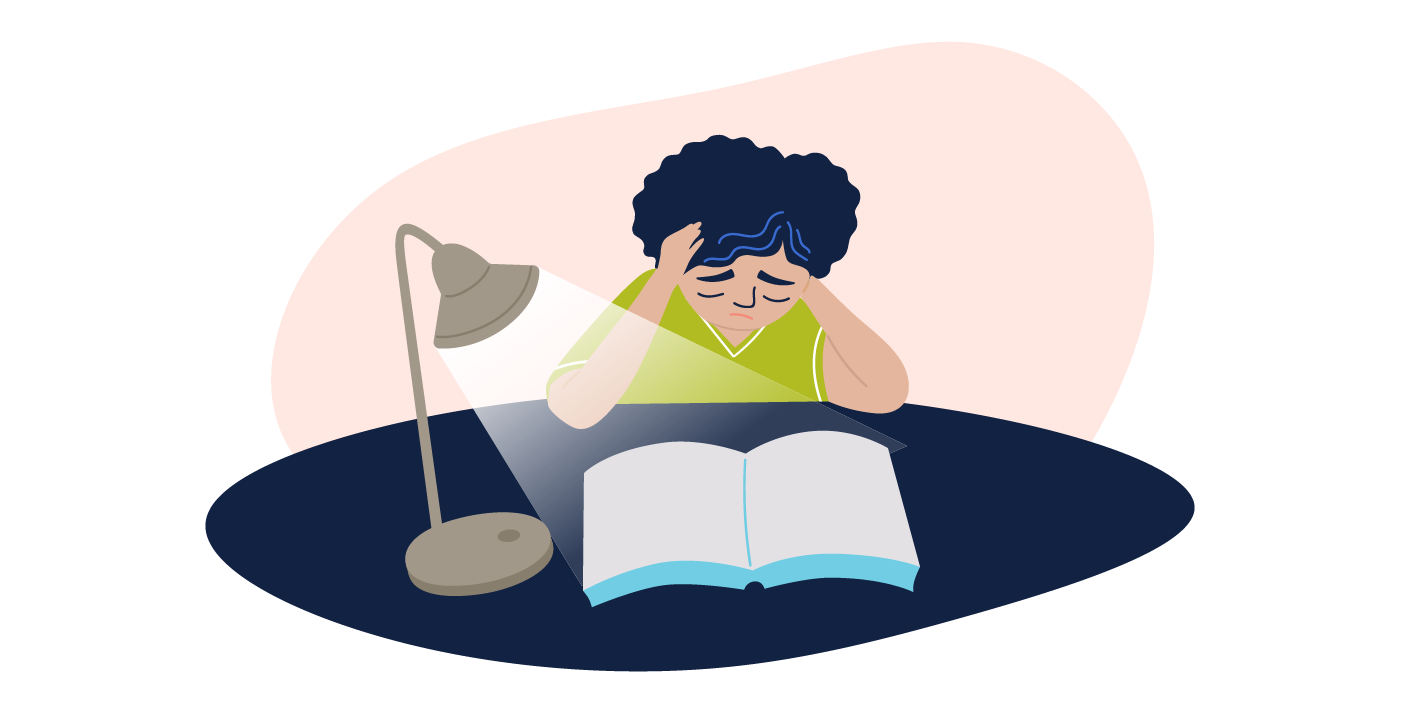When Your Child Worries
You put your daughter to bed hours ago, but at 11 PM she comes running into your room saying, “I want to sleep with you. I’m afraid.” This has been going on for the past month even though she has always slept alone without any problem.
It is Monday morning and your son complains he has a stomachache and doesn’t want to go to school. You know he’s not sick, but for the last two months his tummy aches have been a common occurrence. What is going on?
Your child wants to attend a birthday party but is worried about going because she’s afraid of dogs that might be there. How do you help her?
All children have fears and in many situations the fear is adaptive. We should be fearful when we are in threatening situations. Our flight or fight response helps to get us out of a dangerous situation. Having some fear can also help us accomplish our goals. For example, when we worry about how we will do on a test, we may dedicate more time to studying. However, fears can also become debilitating and get in the way of doing things we want to do or should do. Approximately 1 in 8 children has worries that get in his way and parents often struggle to help him.
What do children worry about and why? Typical fears include being away from parents, talking to others outside the family, making friends, taking a test, being around dogs or experiencing the dark. Some children seem to worry about everything. Worries can emerge in new or unfamiliar situations or in reaction to an event. Other times worries seem to develop out of nowhere and it can be difficult to understand how they began.
However your child’s fears emerged, you can help him by attending to his fears, teaching him coping strategies, and developing a step-by-step plan to overcome fears.
Attend to Your Child’s Fears
- Attend to your own feelings about your child’s fears. Some parents become weary of constantly reassuring their child or feel frustrated that their child’s fears are disruptive and unrealistic. Do not let these feelings interfere with your ability to listen to your child.
- Find a time to talk to your child about his fears when he is not experiencing them.
- Let him know you notice his fears and care about how he is feeling.
- Validate his feelings and his experience, and clarify what he’s afraid of to help him feel heard.
- Avoid making jokes or teasing your child. Do not discount his feelings by saying, “There’s nothing to worry about.”
- Avoid jumping to problem solving or reassuring until you have heard his concerns.
- For younger children who often have a hard time expressing themselves, act out the situation with stuffed animals. Have one animal play the role of your child and have the other animal listen, clarify, and ask questions.
Teach Coping Strategies
Once you understand your child’s fears and your child feels your understanding and support, give him strategies to cope. Research has shown that the best way to overcome fears is to face them. Some examples of strategies that help children decrease their worries include:
Calm the body: When children experience worries, they typically experience tension in their bodies that may manifest as a racing heart, a headache, or another physical feeling. Teach your child to calm his body by slowing down his breathing. Ask your child to breathe in through his nose and blow air out through his mouth. For younger children, have them imagine blowing bubbles. Practice this skill at night before bed.
Reframe negative, unrealistic thinking: Children who worry often have negative thinking, focusing on all of the worst outcomes. A child who is afraid of a dog biting him may believe that every dog will bite him. Help him reframe his thinking by reminding him of the friendly dogs he knows.
Offer positive coping thoughts: Remind your child of the times he has faced his fears and overcome them. Even more powerful, ask him to recall a time he was afraid and successfully faced the fear. Teach him to turn his memory into a positive self statement such as, “I’ve met dogs before that I like and am not afraid of.”
Make environment modifications: For a child who is afraid of the dark, use a night light or make sure he sleeps with his favorite bear. A ‘lucky’ stone that a child carries in his pocket to go to the park can remind him that he’s safe. A favorite book or other item from home can make separating from his family easier.
Develop a Plan
Once a child is armed with the tools to help himself, he can begin to slowly face his worries with a step-by-step approach. It is very important that you and your child come up with this plan together so your child feels comfortable at each step and is moving towards the larger goal. For the young child who complains of belly aches before school, offer to go to school with him and stay in the classroom for the first 15 minutes. Once this step is going well, reduce the time you stay to 10 minutes and then to 5 minutes. Later, walk him to the door and say goodbye outside. As he makes more progress, drop your child off at the curb.
Rewards: Rewarding your child for each successive step he takes towards facing his fear will help motivate him to accomplish his goal. Rewards do not have to be material things, but can include spending special time together, choosing a favorite meal for dinner or picking a movie to watch on the weekend.
As a child begins to face one worry at a time, his self-confidence grows and he is able to generalize his skills and capabilities to other situations. Remember these are just a few of the many strategies available to help your child. If his fears persist or grow, seek help from a professional.
Coping with our worries is an important skill that everyone needs to develop. Showing your child that you take his fears seriously, care about his feelings and know how to help him learn skills to make progress will give him the invaluable experience of being supported by another when he feels vulnerable.





